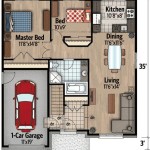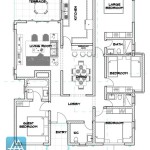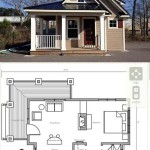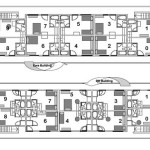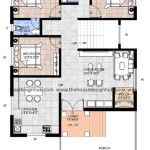How to Design a House Floor Plan
Designing a house floor plan is an exciting and rewarding process, but it can also be daunting, especially for first-timers. Whether you're building a new home or remodeling an existing one, a well-designed floor plan is essential for creating a functional and comfortable living space.
Here are some key steps to guide you through the process of designing a house floor plan:
1. Determine Your Needs
Before you start sketching, take the time to think about your family's needs and lifestyle. How many bedrooms and bathrooms do you need? Do you want a formal dining room or a more casual eat-in kitchen? Do you need a home office or a dedicated playroom for the kids? Once you have a clear understanding of your needs, you can start to develop a floor plan that meets them.
2. Choose a Floor Plan Style
There are many different floor plan styles to choose from, each with its own advantages and disadvantages. Some popular styles include:
3. Plan for Flow and Functionality
A well-designed floor plan should allow for smooth flow between spaces without creating cramped or isolated areas. Consider the following principles:
4. Focus on Traffic Flow
Traffic flow is crucial for the functionality of a floor plan. Avoid creating bottlenecks or areas where people will be constantly crossing paths. Design pathways that are wide enough to accommodate comfortable movement and ensure that furniture and appliances are placed in a way that doesn't obstruct flow.
5. Consider Exterior Factors
Don't forget to take into account the surrounding environment when designing your floor plan. Factors such as sunlight exposure, views, and outdoor spaces should influence the placement of windows, doors, and patios. Orient your home to maximize natural light and take advantage of scenic views.
6. Seek Professional Help if Needed
If you're not confident in your design skills or have a complex project, don't hesitate to seek professional help from an architect or interior designer. They can provide valuable expertise, help you avoid costly mistakes, and ensure that your floor plan meets your needs and adheres to building codes.
Conclusion
Designing a house floor plan is a multi-faceted process that requires careful planning and consideration. By following these steps, you can create a functional and comfortable living space that meets your family's needs and enhances your everyday life. Remember to tailor your floor plan to your specific requirements, prioritize flow and functionality, and don't be afraid to seek professional assistance if necessary.

House Plans How To Design Your Home Plan

Floor Plans Types Symbols Examples

Small House Design 2024005 Pinoy Eplans Modern Plans Layout

House Plans How To Design Your Home Plan

Floor Plan Creator And Designer Free Easy App

Floor Plans How To Design The Perfect Layout Cherished Bliss

Small House Design 2024001 Pinoy Eplans Floor Plans

House Plans How To Design Your Home Plan

Small House Design Shd 2024007 Pinoy Eplans One Y Bungalow Plans Layout

From Sketch To Reality How Design A House You Ll Love


